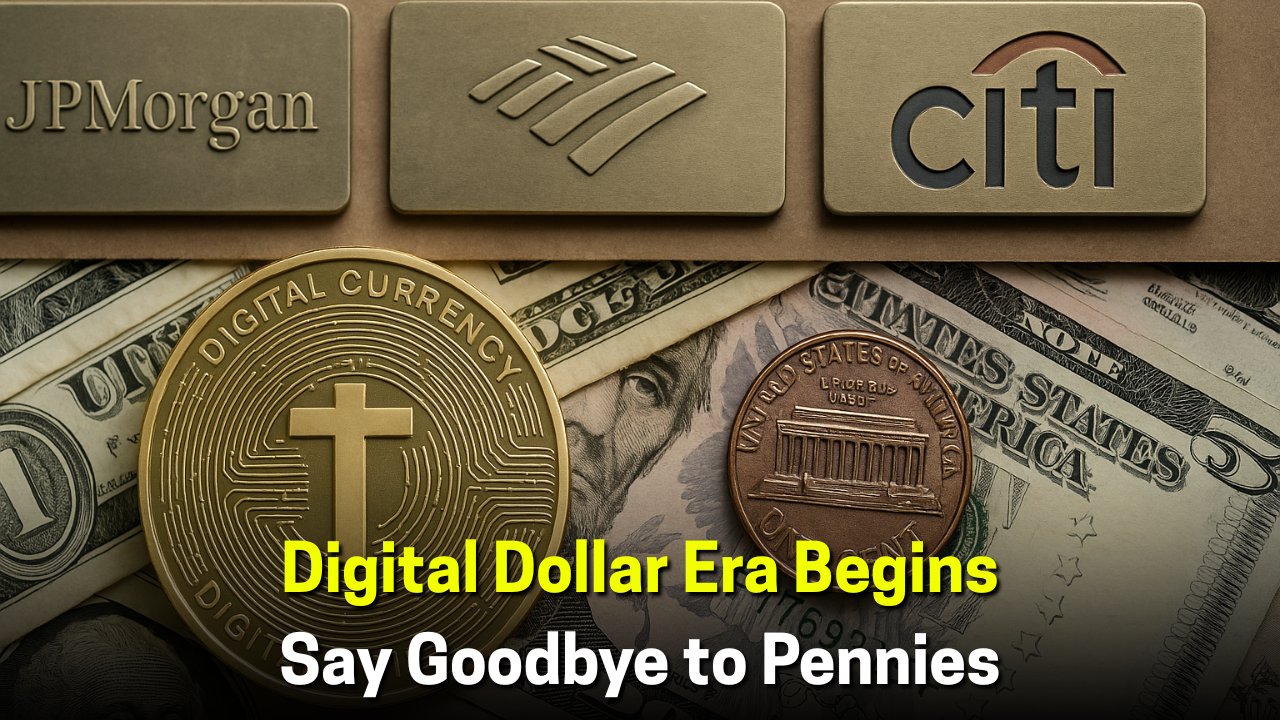Digital Currency – The rise of the digital dollar marks a turning point in the global financial system, and major banks are leading the charge in shaping this new era. As physical coins like the penny approach extinction, the shift toward digital currency is becoming more than just an idea—it is an inevitable reality. Partnering together, leading financial institutions are laying the foundation for a centralized yet modernized digital dollar, which promises greater convenience, faster transactions, and potentially improved security. However, this move also sparks debates about privacy, control, and the future of cash. For everyday people, the end of physical coins might seem minor, but it symbolizes a much larger economic transformation. The digital dollar is expected to streamline commerce, change how wages are paid, and even redefine savings. While some view this as progress, others worry about surveillance and loss of independence from the banking system. What’s certain is that the digital currency era is no longer a distant concept—it has officially begun.
Why Major Banks Are Leading the Digital Dollar Push
Banks have always been the backbone of financial systems, and their involvement in launching the digital dollar is both strategic and necessary. By leveraging their established infrastructure, expertise, and trust with consumers, they can provide a smooth transition from paper money to digital currency. The motivation behind this collaboration lies in the global push for faster, more transparent transactions. With cash usage declining and online commerce surging, banks see digital dollars as a way to remain competitive against emerging fintech and crypto solutions. Moreover, a centralized digital dollar backed by the government can eliminate the volatility often associated with cryptocurrencies. For banks, this isn’t just about adapting—it’s about survival and ensuring their continued dominance in a rapidly evolving financial landscape. Their active role guarantees credibility and adoption, making the digital dollar rollout more seamless for both businesses and individuals.
The Penny’s Extinction and Its Symbolic Impact
The disappearance of the penny might sound trivial, but its phasing out represents a powerful signal of change in the monetary system. For over a century, the penny has been an integral part of everyday transactions, but inflation and the rise of cashless payments have made it nearly obsolete. Its extinction symbolizes the beginning of a cashless future, where every transaction is digitized and tracked. Many countries have already eliminated their lowest denominations, and the U.S. appears to be following suit. Beyond just cost savings in minting coins, the move highlights the inefficiency of maintaining outdated currency in a high-tech economy. For the average consumer, the end of pennies may mean rounding transactions up or down, but for economists, it reflects a broader shift toward digital-first systems. In many ways, the penny’s disappearance is the quiet prelude to a louder revolution: the arrival of the digital dollar.
Benefits and Promises of a Digital Dollar
The digital dollar is not just a replacement for physical money—it brings with it a host of potential benefits. For consumers, it promises faster payments, no more waiting days for bank transfers, and seamless integration with e-commerce. Governments stand to gain improved efficiency in distributing social benefits, tax refunds, and relief funds. The digital dollar could also help fight crime by reducing untraceable cash transactions, making the financial system more transparent. For businesses, the benefits include reduced transaction fees, quicker settlements, and expanded access to global markets. Beyond these practical advantages, the digital dollar could help integrate millions of unbanked individuals into the financial system. With just a smartphone, anyone could store and use money securely, making financial inclusion more achievable than ever before.
Challenges and Concerns in the Digital Currency Era
Despite its promises, the digital dollar raises several pressing concerns that cannot be ignored. Privacy is the most prominent issue, as a centralized digital currency could allow governments or banks to monitor every transaction. This level of surveillance raises fears about personal freedom and financial independence. Another concern is cybersecurity: digital systems are prone to hacking, outages, and fraud, which could jeopardize trust in the system. Additionally, the elimination of cash means people who rely heavily on physical currency—such as seniors or those without access to technology—may be left behind. There are also broader economic questions, such as how digital currency will impact monetary policy, banking profits, and interest rates. While the digital dollar is undoubtedly the future, its implementation must balance innovation with protection of individual rights, ensuring that the transition benefits all and not just a select few.
